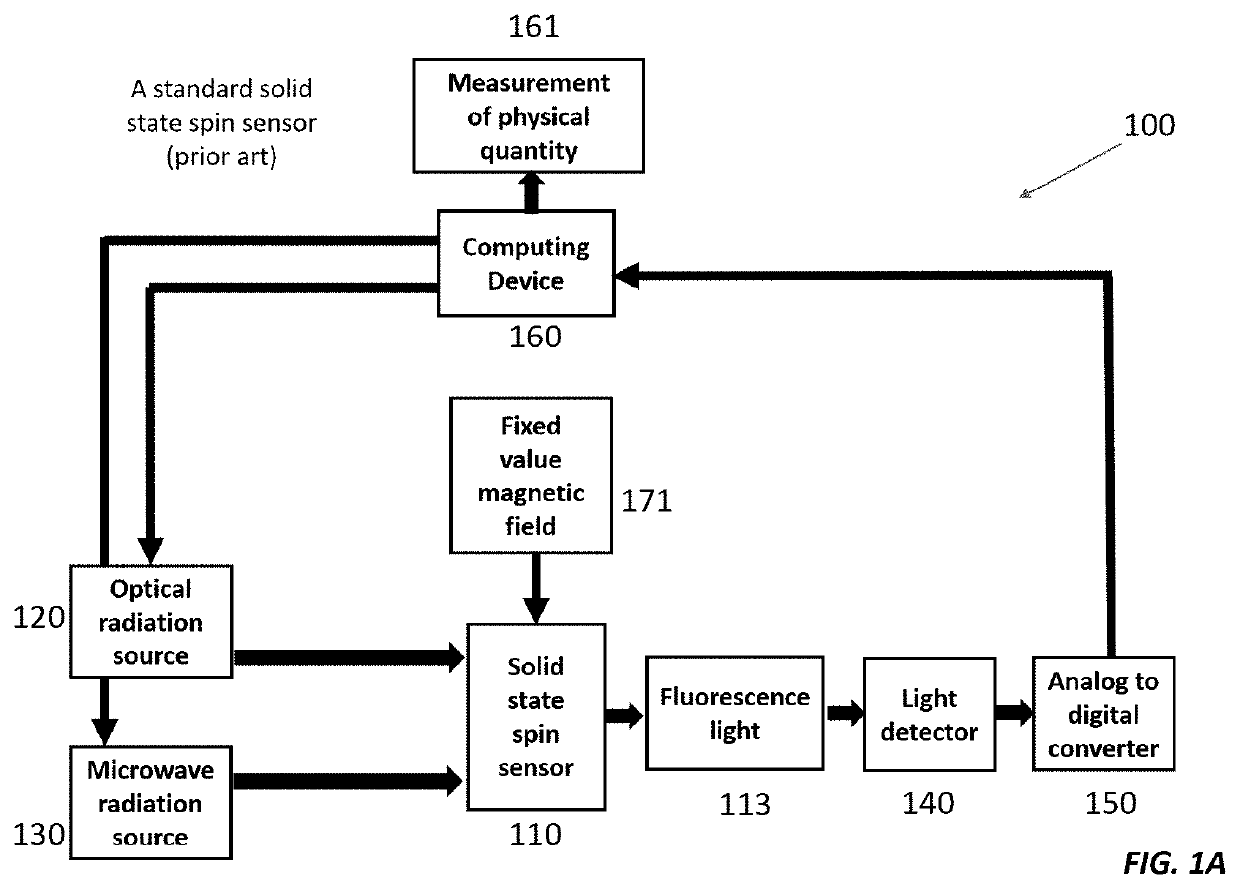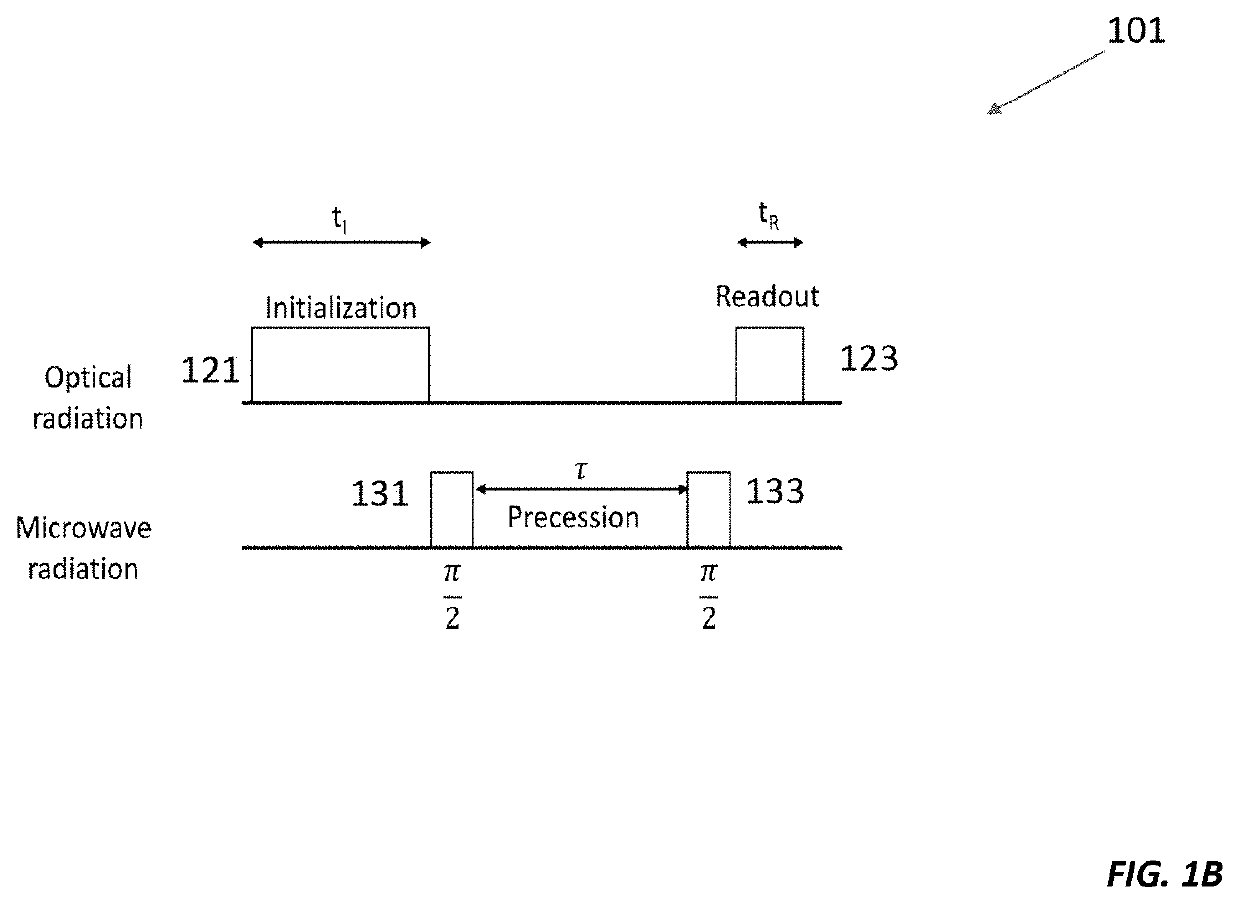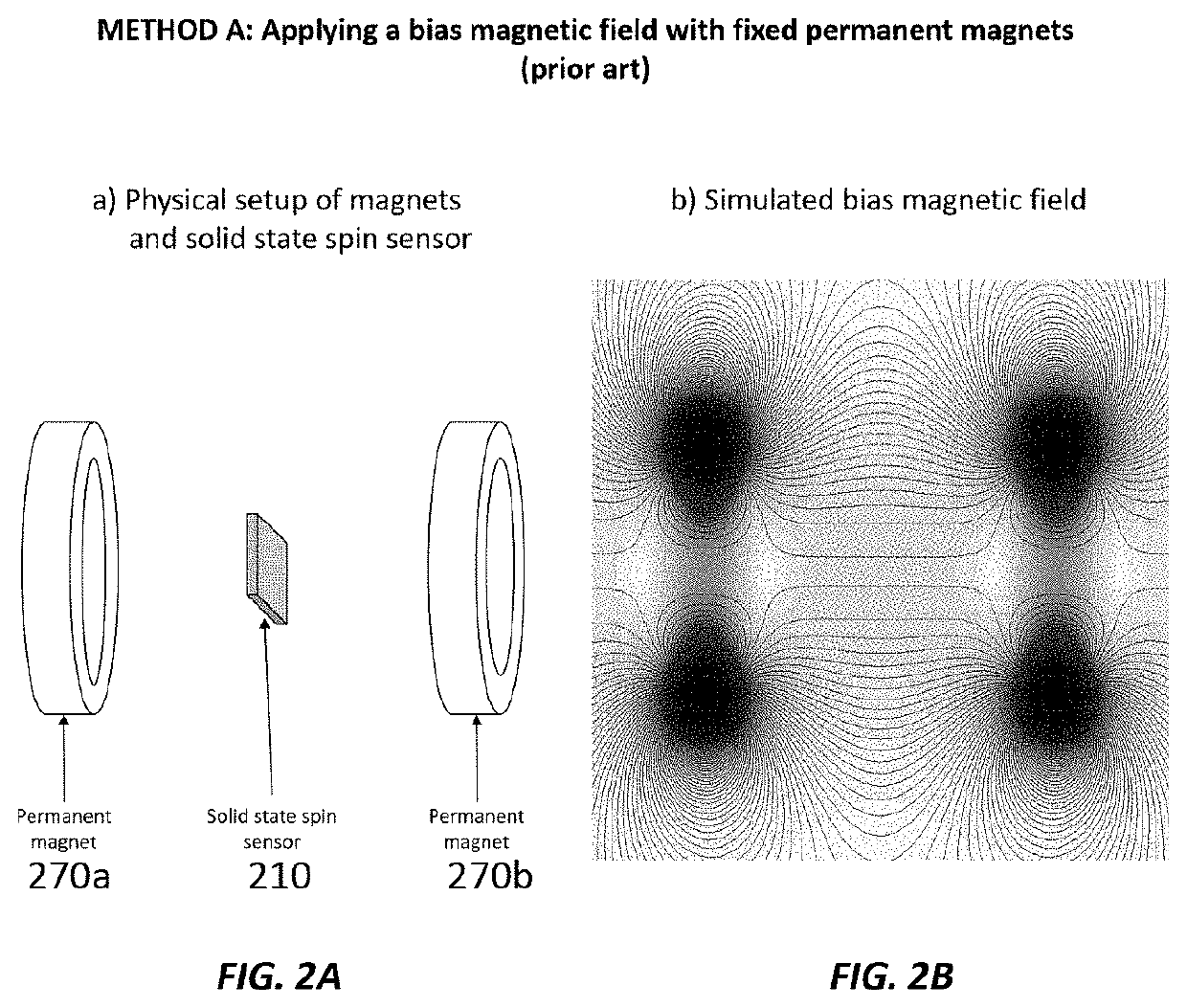Stationary magic angle spinning enhanced solid state spin sensor
a technology of spin sensor and magic angle, which is applied in the direction of magnetic measurement, measurement using nmr, instruments, etc., can solve the problems of greater electrical power loss in the first pair of coils and the second pair of coils than in the electrical power loss field, and achieve the effect of low cos
- Summary
- Abstract
- Description
- Claims
- Application Information
AI Technical Summary
Benefits of technology
Problems solved by technology
Method used
Image
Examples
Embodiment Construction
[0045]In sensing an external magnetic field with a solid-state sensor, the sensitivity and signal-to-noise ratio (SNR) of the measurement depends in part on the sensor's dephasing or dephasing time, T2*. The T2* dephasing time characterizes the time over which the color center defects within the solid-state spin sensor undergo inhomogeneous dephasing. The T2* dephasing time is also sometimes called the free induction decay time. Since inhomogeneous dephasing of the color center defects within the solid-state spin sensor results in loss of information, the T2* dephasing time sets an approximate limit on the sensing time for a single measurement.
[0046]In practice, the length of a single measurement is limited to an interrogation time less than or about equal to the T2* dephasing time. Since longer interrogation times yield more sensitive measurements and higher signal-to-noise ratios, it is usually highly desirable for a solid-state spin sensor to have the longest possible T2* dephasi...
PUM
| Property | Measurement | Unit |
|---|---|---|
| equivalent series resistance | aaaaa | aaaaa |
| magnetic field | aaaaa | aaaaa |
| wavelength | aaaaa | aaaaa |
Abstract
Description
Claims
Application Information
 Login to View More
Login to View More - R&D
- Intellectual Property
- Life Sciences
- Materials
- Tech Scout
- Unparalleled Data Quality
- Higher Quality Content
- 60% Fewer Hallucinations
Browse by: Latest US Patents, China's latest patents, Technical Efficacy Thesaurus, Application Domain, Technology Topic, Popular Technical Reports.
© 2025 PatSnap. All rights reserved.Legal|Privacy policy|Modern Slavery Act Transparency Statement|Sitemap|About US| Contact US: help@patsnap.com



